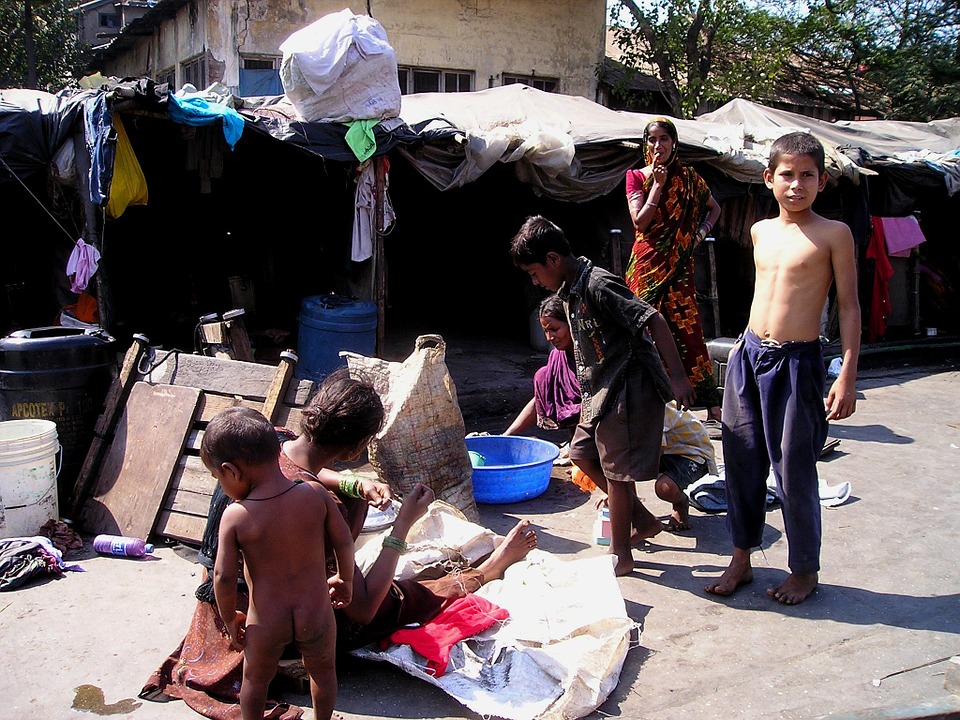It was interesting to read a series of tweets consolidating year 2016 from the International Spectator on Twitter. Some of these include, India tops the GDP charts with 7.2%; India stands third position with 111 billionaires, next to US and China and military spending is around 51$ billion, ahead of Japan and Australia. Ironically, India also stands to be number #1 in poverty with 22% of the population in the bracket, but continues to make big strides in alleviating the poverty.
Poverty in India is an important issue. The biggest and longest fight has been against eradicating poverty ever since Indian independence. National and regional elections have been fought and won based on populist measures. Interestingly, India is also one of the fastest growing economies in the world with the growth rate of 7.6% in 2015. Ironically, quarter of the population is also reeling under poverty. Given the context, it is the right time to reinforce the understanding of the issue of poverty and various measures curbing from urban and rural India.
The World Bank defines poverty in absolute terms defining extreme poverty as living on less than US$1.25 per day (Rs 90). By these standards and based on Indian economist Tendulkar methodology, 22% of the population is still under acute poverty. Report of the Expert Group to Review the Methodology for Measurement of Poverty, published in June, 2014 by Planning Commission, Government of India defines poverty line as, “monthly per capita consumption expenditure of Rs 972 in rural areas and Rs 1407 in urban areas is treated as the poverty line at the all India level. This implies a monthly consumption expenditure of Rs 4860 in rural areas or Rs 7035 in urban areas for a family of five at 2011-12 prices.” By these standards, it is even scarier to interpret that the poverty ratio at all India level for 2011-12 reaches to whopping 29.5%.
It would be worthwhile to understand why poverty sustains and in most cases passes on to generations without any remorse. It is also known as vicious circle of poverty. “It implies circular constellation of forces tending to act and react one another in such a way as to keep a poor country in a state of poverty”, as quoted by Prof. Nurkse, a pioneer economist defined the model of vicious circle of poverty. The explanation of the concept goes on detailing how low income results into meager savings eating into the investment opportunities. It is obvious low investment options create deficiency of capital leading to low productivity. Further, low productivity minus low income lowers the returns and the income. And, the circle of poverty perpetuates.
There are different measures based on rural and urban areas. Majority of these measures are aimed at curbing poverty in the rural areas as rural India has high prevalence rate. There are largely five kinds of measures to fight poverty in India.
First, wage employment programmes that provide wages against manual labour work. Some of the prominent programmes include, Sampoorna Grameen Rozgar Yojana that provides wage employment in infrastructure building projects like construction of roads and buildings, and Mahatma Gandhi National Rural Employment Guarantee Act that guarantees 150 days of paid work to people in the rural areas.
Second, self-employment programs that include Integrated Rural Development Program enabling families to cross the poverty line in a given timeframe. This can be done by taking up activities like agriculture, horticulture, animal husbandry and Training Rural Youths for Self-Employment that provides skills and technical training to rural youths living below the poverty line.
Third, would include food security programmes like the enactment of the National Food Security Act, 2013. The act converts existing security programs in to legal entitlement. It includes the Midday Meal Scheme, Integrated Child Development Services scheme and the Public Distribution System.
Fourth, social security schemes such as Pradhan Mantri Suraksha Bima Yojana for accident insurance and Pradhan Mantri Jeevan Jyoti Yojana for life insurance.
Fifth, Skill development programs such as Deen Dayal Upadhyaya Grameen Kaushalya Yojna to enable a large number of youth from below poverty line to take up industry-relevant skills training.
There has been a substantial progress in boosting prosperity and reducing poverty. The future seems to be holding for good with a number of corporates pooling in with huge chunk of funds in fighting to eradicate poverty through Corporate Social Responsibility initiatives. It is right time to infuse these forces with even more rigour and resources.
About the Author
Nirbhay K is a CSR professional and an IIT alumnus. Author can be reached @NirbhayK2.
The views and opinions expressed in the article are solely of the author in personal capacity and do not in any way represent views of any institution, entity or organisation that the author may have been associated with.
Thank you for reading the story until the very end. We appreciate the time you have given us. In addition, your thoughts and inputs will genuinely make a difference to us. Please do drop in a line and help us do better.
Regards,
The CSR Journal Team

